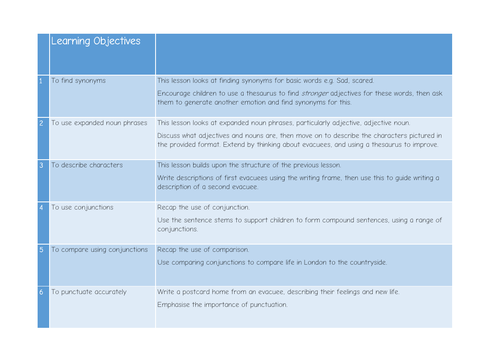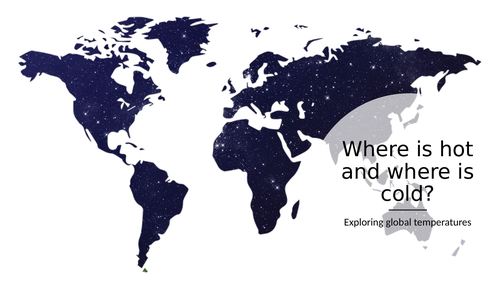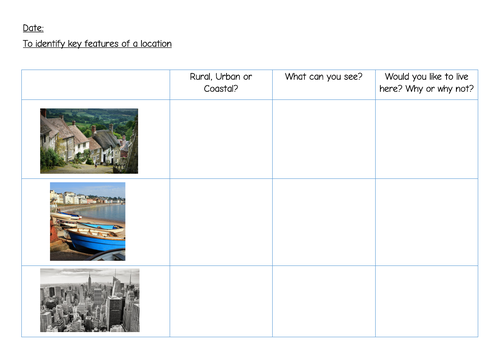37Uploads
69k+Views
47k+Downloads
Cross-curricular topics

KS1 geographical enquiry
A series of worksheets to be used for geographical inquiry with KS1. It asks children to identify features of a place, and suggest what it might be like to live there. Links also to work on city/town/village.
I originally used this as a continuous provision activity, but it could easily be part of a lesson.

Example Poem linked to Romans
A poem based on the Romans to be used as a model text when teaching poetry. Contains examples of repetition, rhyme, alliteration, similes and metaphors. Suitable for KS2, or lower KS3.
A set of differented questions is also available.

Questions for Roman Poem
Differentiated questions linked to figurative language in a poem linked to the Romans.
Can be used as part of a series of work on poetry, figurative language or generally as part of a topic on the Romans.
Ideally suited to LKS2 but could also be used in UKS2.

Geography Italian food, agriculture, weather
A powerpoint and worksheet used as part of a topic on Italy/Romans, looking at the links between food, farming and climate. Children are asked to explore what the popular foods in Italy tell us about agriculture and climate.
Originally used in Year 4, but could be used with slightly older or younger children.

European geographical enquiry (Italy, Poland, UK, Norway)
A set of picture prompts (buildings, countryside, maps, food etc) to prompt geographical inquiry about different countries in Europe. Originally this was used as a geography skills lesson, but this could be incorporated into a wider topic on Italy, Europe, Poland or the UK.
Two sets of documents enclosed - one is just picture prompts for initial discussion. The second set enables pupils to share their responses (worksheets).

SEND/LA WW2 Description evacuation
A week of English activities linked to describing WW2 evacuees.
This unit of work was designed for a group of children working significantly below KS2 standards, so that they were able to successfully access work on the same topic as their peers.
Originally this was used in KS2, but this could also be relevant to SEND pupils in KS3.
An overview of the week is provided, as well as activities to complete.

KS1 Equator and poles
A lesson introduction and activities used with a year 2 class to explore the temperature of different parts of the globe.
Introduces the idea of poles, as well as the Equator. The two different activities both relate to temperature - one asks children to make the varying temperatures on a world map; the other looks at animals in hot and cold environments.
This could link to science and habitats.

Intro to the Stone Age (timelines)
Need some help with your Stone Age-Iron Age topic?
This is an introductory lesson on the Stone Age. Contains a powerpoint explaining the key periods of the stone age, and a multi-option timeline activity to document the chronology of the period.
This could be used to start a Stone Age-Iron Age topic in KS2, or for any other age group interested in this time period.

KS1 rural urban coastal
A PowerPoint and associated activities used during an “Our World” topic to introduce the concept of coastal, rural and urban.

2020 Olmypics lessons
A series of presentations and activities I have made ready for the 2020 Olympics in Tokyo. I have designed these for Year 4, but they could be used with any KS2 or KS3 class if adapted.
Contains:
History of the Greek Olympics presentation
Historical/Geographical source work - “How have the Olympics changed?”
Powerpoint on Tokyo and how they got the games
Template to make a guidebook to Tokyo
Lesson worksheets about Tokyo
Presentation about Olympic medals

Geographical Enquiry - KS2 Romans
This is a lesson used to explore the question, “Why did Rome become the capital of the Empire?” It has links both to geography and history, and would be ideally suited to a topic on the Romans or on Italy the country.
Originally I used this in KS2. The main skills focus is on exploring how the physical features of a place affect human activity and economic growth.

KS2 Doubling -Exponential growth
An lesson based on the traditional Indian tail of Sissa-ben-Dahir. This looks at the concept of exponential growth through doubling.
Children are introduced to the topic through the powerpoint, and then explore doubling using the game of chess.
I have used this across KS2, but this could also be used in other age ranges
Bundle

Stone Age-Iron Age Pack
A pack of resources containing powerpoints, activities and worksheets about the Stone Age-Iron Age topic.
Includes artefact work, comparisons and links to archaeology. Supports historical enquiry and discussion.













